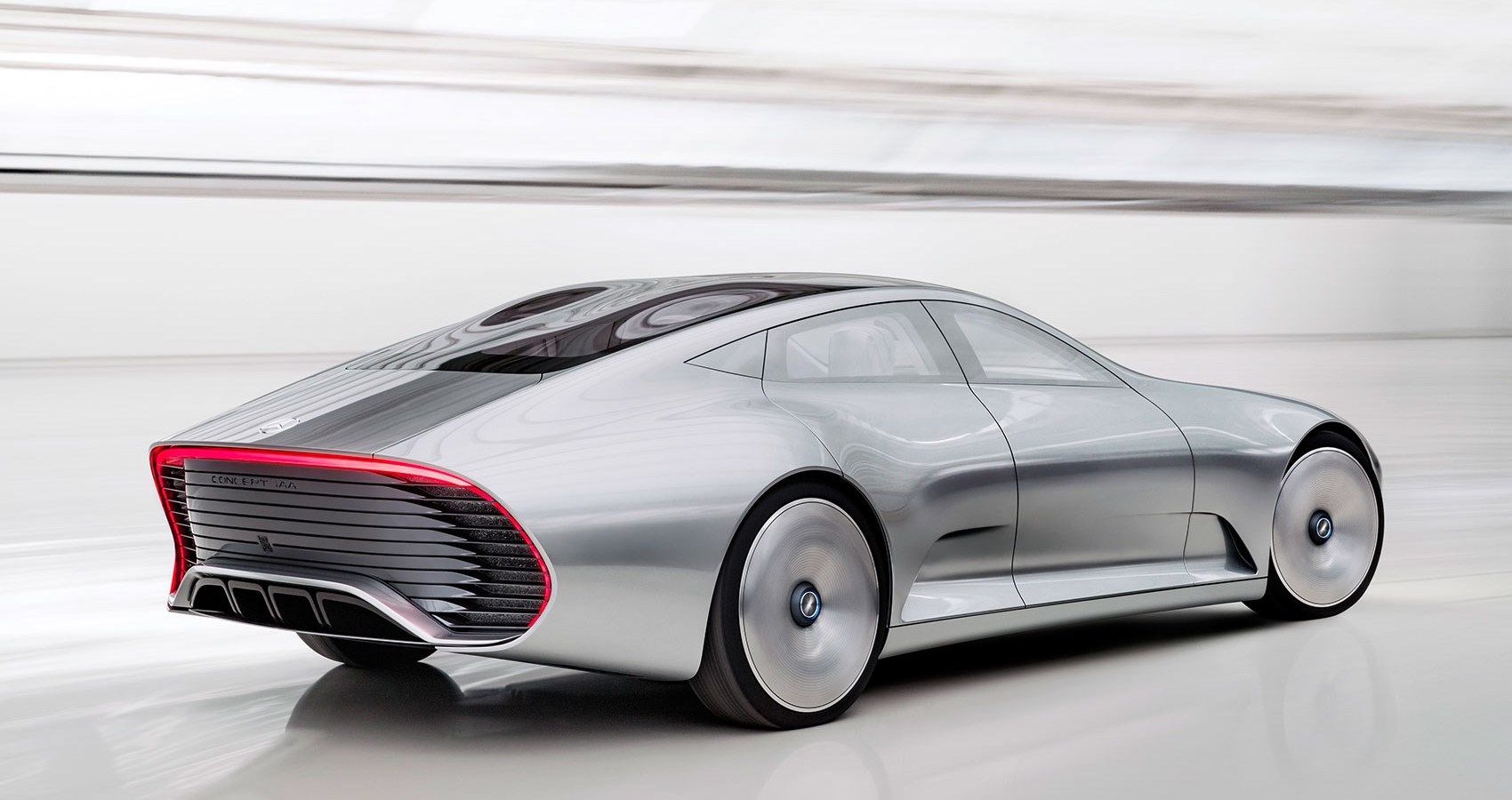In the fall of 2015, Mercedes-Benz wowed the world with what he called the champion of aerodynamics; a 4-door sedan looking like a guided missile, the Mercedes Concept IAA. To a large extent, it is a streamlined guided missile from the inside out, top to bottom, to move as efficiently as possible in a symmetrical fashion. The IAA Concept is the definitive benchmark for the company’s business sedans of the future.
From its logo, we know that the three points of the star symbolize Mercedes’ long-term vision to conquer land, sea and air. Could the new Concept’s making ground meat from the wind mean the next phase of the brand’s hopeful dominance over the air after conquering dry land? After all, it was barely a year after unveiling the Concept IAA that the German company unveiled a luxury 16-passenger plane designed by Mercedes-Lufthansa.
IAA is short for Intelligent Aerodynamic Automobile, with the automaker touting the concept as two cars in one, “a Cd value of 0.19 and a four-door coupe embodying compelling design.” The IAA Concept is a crystal ball looking towards the future of energy-efficient mobility. Let’s look at this.
The Mercedes Concept IAA: the aerodynamic champion
This is not just a legend; the Mercedes Concept Intelligent Aerodynamic Automobile is truly an aerodynamic champion. You may have noticed that most modern cars share a common foundation in terms of structural design. That’s because automakers have come to the same conclusion from independent research that shape determines a car’s aerodynamic capabilities. This explains why our roads are flooded with cars from different manufacturers, which all seem to come from the same factory.
But as the Mercedes Concept IAA demonstrates, the challenge of automotive aerodynamics can only push the boundaries of automotive design, not smother it. According to Dr Thomas Weber, Mercedes-Benz Cars Head of Development, “The ‘IAA Concept’ applies clever innovations to solve the conflicting goals of functionality and aesthetics and shows that we still have a lot of ideas on how to ‘further improve efficiency.
This car managed to achieve just about every goal in automotive aerodynamics, including reducing drag and improving high-speed agility. Not that the Concept IAA is a speed machine. Sitting there at the Frankfurt International Motor Show in September 2015, you’d take one look and imagine it leaving the 2021 Bentley Flying Spur or 2021 Audi RS7 in the dust.
Instead, the Mercedes Concept IAA boasts an electronically limited top speed of 155 mph. It’s powered by a gasoline-powered plug-in hybrid powertrain that puts out a rather modest 279 horsepower.
This is where we talk about what the marquee means by a two-in-one car “with a Cd value of 0.19 and a four-door coupé embodying an irresistible design”. If you drive it below 50 mph, the car behaves like your typical Mercedes sedan. Go beyond that, and it quickly transforms into the aero champion it was designed to be. The panels deploy from the front, rear and sides to reduce the drag coefficient to 0.19. Compare that to the 0.23 of the latest Mercedes S-Class and you’ll see why Concept IAA is the champ.
As you know, the drag coefficient (Cd) is the measure of a car’s aerodynamic capability based on its shape. The lower the drag, the higher the top speed and overall fuel efficiency. Low Cd also affects other performance attributes of the car such as acceleration and handling. No other car matches the Concept IAA’s 0.19 drag coefficient.
You can press a button to activate aero mode, or it automatically turns on at 50 mph (80 km/h). At this point, the car undergoes both bodily and technological changes, all designed to win the war between object and air.
The grille shutters close. The front bumper louver moves 60mm rearward to improve underbody airflow. The front bumper flaps move outward 25mm forward and 20mm rearward, improving airflow around the front and front wheel arches. The tail section extends 390 millimeters, leaving the car with a more pronounced tail and reducing turbulence in the high-speed zone.
Additionally, the active rims change their 55mm cup to zero, flattening out to create a smooth surface, and the Concept IAA is finally a guided missile that races against the wind. Cedie says the Concept IAA has an all-electric sibling that can go 41 miles in aero mode or 38 miles in design mode.
Inside, the cockpit and cabin are loaded with technology, signaling the futuristic concept. He has Mercedes Car-to-X technology, a kind of IoT allowing it to communicate with connected objects nearby, say, a comparably equipped vehicle that is not necessarily Mercedes. It has touch sensors on the steering wheel which can control almost all car functions. A touchpad on the center console helps drivers keep their eyes on the road.
The Mercedes IAA and the future of automotive design
Mercedes Concept IAA may never make it to the production line, but its goal is clearer than the sky. It will serve as a drawing board for future vehicles from the three-pointed star as well as other brands. Car-to-X technology is a good example, although it’s not the focus here.
You can expect to see cars coming in the near future with grilles that can be modified to improve aerodynamics. The transformation characteristics are at the heart of what the Mercedes concept hopes to demonstrate, that a correct measurement of the drag coefficient is not complete without considering the frontal area since the front is the total cross-section.
Normally more power – which would mean more battery cells in the third millennium – is needed to compensate for drag. However, Mercedes’ louvered front grilles are an innovative approach to solving this problem. We see it replicated vicariously in car designs of the future.






